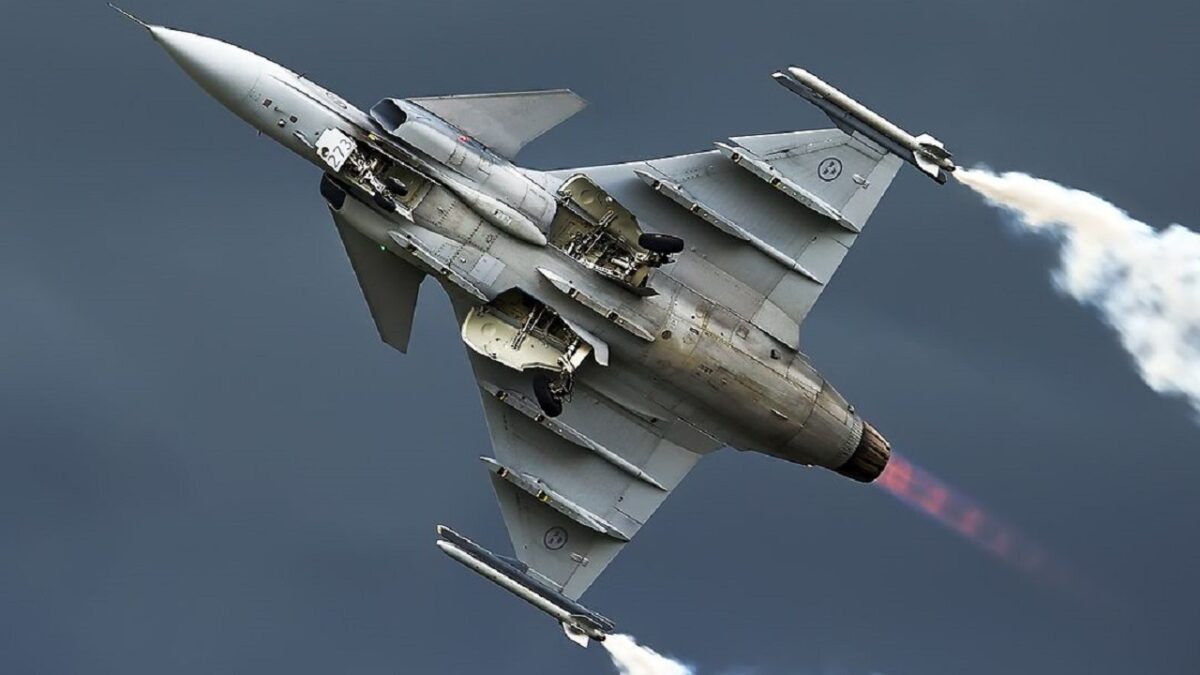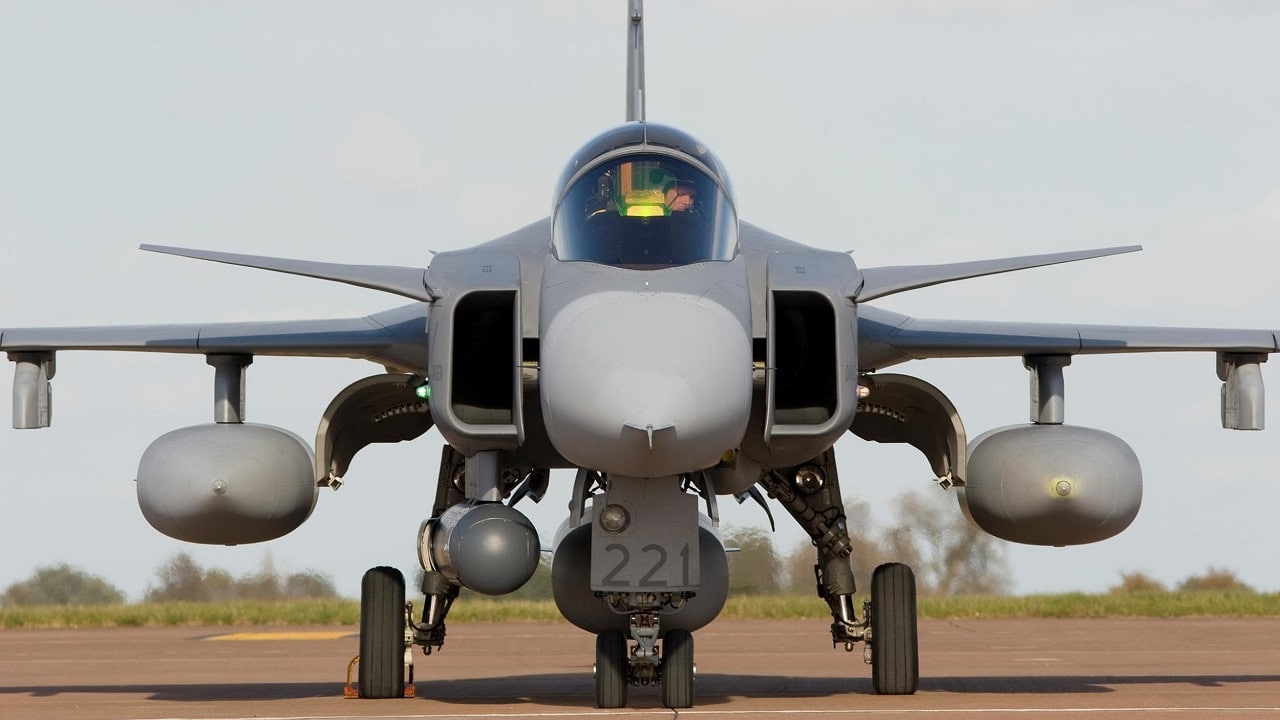It now seems likely, if not inevitable, that Finland and Sweden will join NATO. Russia’s invasion of Ukraine has transformed opinion in both countries and has started a political process that may result in the alliance’s first substantial enlargement since several Baltic and Balkan states joined in 2004. For its part, NATO seems open and even eager to begin the process. How did we find our way here and where are we going?

JAS 39 from Sweden. Image Credit: Creative Commons.
History
Finland and Sweden each found their own ways to neutrality. Since the end of the Napoleonic Wars, Sweden has sought to avoid deep entanglement with European balance of power politics. Sweden avoided engagement in World War I and again in World War II, despite facing threats from both the Western Allies and the Axis. Sweden’s commitment to neutrality is deeply held even as the extent of its relationship with NATO has grown over the last three decades.
For its part, Finland found itself in the Russian Empire following Russia’s victory against Sweden in the Finnish War of 1809. Established a Grand Duchy, Finland enjoyed a quasi-autonomy for much of its time as part of the Russian Empire. Late in World War I, as Tsarist Russia disintegrated, Finland declared its independence. The Russian Baltic Fleet was chased from its moorings in a harrowing journey through ice-filled seas. Finland briefly elected the German crown prince as its own monarch, an arrangement that ended when Germany soon surrendered to the Entente. For the next 20 years, Finland would enjoy independence and a wary peace with the USSR, before the Russian invasion of 1939 began the Winter War. A defeated Finland joined Nazi Germany’s attack on the Soviet Union in June 1941, but Soviet forces eventually prevailed and forced Finland to capitulate in 1944. Finland was allowed to retain its democratic institutions but suffered sharp limitations on its foreign policy, limitations that only really ended with the collapse of the USSR.
The Change
Neutrality works fine as long as norms against wars of territorial aggrandizement hold. When those norms fail, countries need to look for other options. Russian diplomacy on this question has been characteristically unhelpful, with military and political threats pushing Finland and Sweden even closer to NATO.
Both Finland and Sweden have worked extensively with NATO over the past two decades. Their military institutions are already engaged and habituated to a partnership with those of NATO countries, and their equipment is certainly far more compatible (not to mention effective) than that of the most recent waves of NATO candidates. Sweden and Finland have long shared a cooperative relationship on the nature of Scandinavian neutrality, to the extent that observers have in the past expected that NATO membership would come for both or not at all. Thus, it is little surprise to see the countries moving forward in lockstep.
Assets or Liabilities fo NATO
As the Economist’s Shashank Joshi has pointed out, the accession of Finland to NATO would, in a stroke, double the alliance’s land border with Russia. This would make Russia’s position in the far north considerably more vulnerable than it is today. The accession of Sweden would make the island of Gotland an alliance responsibility, sharply curtailing the potential for Russia’s naval maneuver in the Baltic Sea. Both Sweden and Finland have large, modern armed forces, in the case of Sweden supported by one of Europe’s largest and most sophisticated defense industrial bases. The Swedish DIB is already tightly integrated into the trans-European defense network, but direct participation in the NATO alliance could only deepen that integration.
Every problem is an opportunity, and some analysts have pointed out that adding Finland and Sweden to the alliance’s portfolio gives Russia more area to threaten. With the performance of the Russian military in Ukraine thus far, however, it seems like the Finns and Swedes are firmly on the “asset” side of the ledger. Finland’s decision to acquire 64 F-35As significantly increases Russia’s vulnerability on its northern flank, as the Panthers can threaten Russia’s air defense network in ways that conventional fighter-bombers cannot. The prospect of staging other NATO aircraft to Finnish airfields during a crisis also puts Russia at considerably greater risk.

First flight with first Gripen E for Sweden.
Finally, the full accession of Finland gives NATO far greater access to Russia’s north than it currently enjoys. NATO can already take advantage of Norwegian arctic territory, but access to Finland has the potential to give NATO a much clearer view of Russian military dispositions in the north, especially the bases of the Russian Northern Fleet and of Russia’s ballistic missile submarine flotilla.
NATO Here We Come?
The decisions of Finland and Sweden to join NATO are simultaneously momentous and not surprising. Whether Moscow anticipated the move as a consequence of its invasion of Ukraine is unclear, but despite some boilerplate threats it has not reacted as aggressively as it did to the comparatively much less likely accession of Ukraine. Russia may have “priced in” Finnish and Swedish accession as an unfortunate but necessary cost of waging its war on Ukraine, or it may have expected that the two countries would be deterred by Moscow’s military might and the evident will to use it. It may be true that completing the Scandinavian Flush will bake in a degree of long-term confrontation with Russia, but at this point, it is difficult to imagine the future of the relationship growing much dimmer.
It’s hard to escape the bottom line: Putin’s invasion has made Russia less safe and less secure in ways that even a decisive victory in Ukraine cannot remedy.
Now a 1945 Contributing Editor, Dr. Robert Farley is a Senior Lecturer at the Patterson School at the University of Kentucky. Dr. Farley is the author of Grounded: The Case for Abolishing the United States Air Force (University Press of Kentucky, 2014), the Battleship Book (Wildside, 2016), and Patents for Power: Intellectual Property Law and the Diffusion of Military Technology (University of Chicago, 2020).

